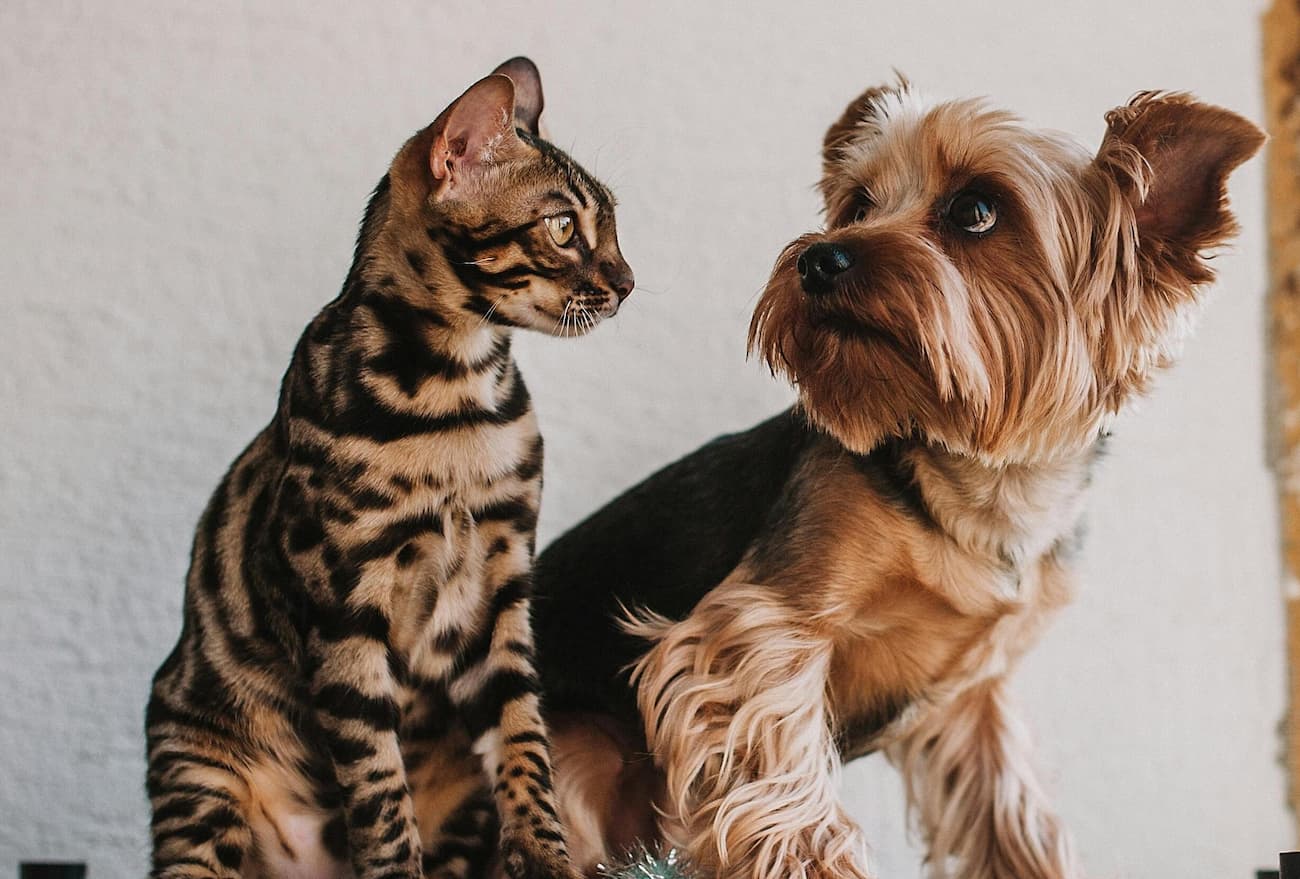I find it interesting that cats and dogs, two of the most beloved companions in human households, are often depicted as rivals. From cartoon chases to viral videos, the “frenemy” dynamic between these two lovable species is quite legendary. Yet, for many pet parents, dogs and cats coexist peacefully (they even form unexpected friendships). So that leaves many of us wondering: do dogs and cats truly understand one another?
According to research, the answer to this question lies somewhere in between. While their communication styles and instincts differ greatly, both canines and felines have an incredible ability to adapt and learn from each other. And this capability to understand each other grows when they share a home with you.
Can Cats and Dogs Understand Each Other?
Shaped by their domestication journeys, dogs and cats have distinct and fascinating communication styles. On one hand, dogs are social animals, evolved to work within a pack. And then there are cats, solitary hunters. Despite their differences, over the years they’ve adapted to living alongside humans—and each other.
Cats and dogs use an intriguing combination of body language, gaze, and sounds to express themselves. For instance:
- Dogs use signals like wagging tails and play bows to show excitement or to express their level of playfulness.
- Cats rely on more subtle cues like slow blinks (to convey trust) or tail flicks (to show how irritated they feel).

These bodily cues can sometimes lead to quite innocent misunderstandings! For example, a dog misinterpreting a cat’s swishing tail as an invitation to play. And yet, when you observe your pets at home over time, you might sense them learning to decode each other’s communicative signals. This happens quite frequently in shared, human-mediated environments.
I truly believe that with enough exposure and patience, dogs and cats can develop their own unique “language,” even if they never fully understand each other in the way they comprehend and acknowledge their own kind. We can also use tools like training or talk buttons to help bridge the communication gap. They are a fun way for pets to express themselves more clearly and for us to better understand their needs and emotions.

Do Dogs Get What Cats Are Saying When They Meow?
Did you know that meowing is a unique vocalization that cats developed primarily to communicate with humans? Pay close attention: adult felines rarely meow at other cats. Instead, they focus this behavior on their human companions. Conversely, dogs likely don’t understand the specific meaning of a meow, but they can interpret it contextually.
For example:
- Dogs may associate a cat’s meow with attention-seeking or food requests (especially if you often respond to it).
- A distressed or aggressive-sounding meow, together with defensive body language, likely tells a dog quite explicitly that they should keep their distance.
A dog’s ability to interpret emotional tone—whether it’s in a human voice or a cat’s vocalization—is a unique ability that helps them guide through these interactions.
How Do Cats and Dogs View Each Other?
Dogs and cats often view each other through the special lens of their own species’ social instincts, plus learned experiences:
- Dogs might see cats as smaller, intriguing companions—or even potential playmates. They have natural tendency to seek social interaction which can make them eager to approach. And yet they might misinterpret a cat’s signals as invitations (rather than warnings).
- Cats, on the other hand, might initially view dogs with caution, and we can thank their solitary ancestry for that. They may portray a dog’s excitable energy as threatening until enough familiarity grows.
If you’ve ever owned both a dog and a cat at the same time, you know how entertaining it is to watch them battle and overcome their differences. Over time, they often figure out how to coexist—and sometimes, they even surprise us with displays of affection, like grooming or cuddling.

Do Dogs Know What Cats Are?
While our dogs don’t “know” what cats are (in a scientific sense) they do seem to recognize that cats are pretty dissimilar from themselves. This intelligent recognition likely stems from contrasts in the way they smell, behave, and communicate with one another.
Dogs’ keen sense of smell helps them identify individual cats. What’s more, their ability to interpret body language is how they can differentiate between playful, neutral, and defensive stances. Similarly, studies suggest that cats rely on their territorial instincts and scent-marking behaviors to interact on the same level as dogs.
I think it’s fascinating how both species use their unique skills to interpret and interact with each other. Isn’t it a great reminder of just how adaptable animals can be?
Do Dogs and Cats Understand One Another When They Interact?
Despite how it may seem sometimes, dogs and cats don’t inherently understand each other. Instead, they rely on learning and adaptation to communicate. Here are a couple more examples :
- Dogs often use behaviors like play bows to invite interaction. Now cats may interpret this behavior as threatening unless they’re accustomed to the gesture.
- Cats, in turn, might hiss or growl because they want to set boundaries. This teaches the dog to approach more cautiously.
Our pets’ ability to coexist depends significantly on their exposure to each other. Shared experiences, and how you, as their owner, guide their interactions, play a huge role!
Final Thoughts
Do dogs and cats truly understand one another? Not in the way they understand their own species, but they’ve shown remarkable adaptability in bridging the gap. Through observation, learning, and their shared connection to humans, dogs and cats can coexist and even thrive together.
Their relationship isn’t just to do with tolerance—it’s also a testament to the power of adaptation, trust (and perhaps even a little curiosity on both sides). And if you watch closely, you might even see them forming bonds that go beyond what we expect from two such different creatures.
Sources
- Koyasu, H., Kikusui, T., Takagi, S., & Nagasawa, M. (2020). The Gaze Communications Between Dogs/Cats and Humans: Recent Research Review and Future Directions. Frontiers in psychology, 11, 613512. https://doi.org/10.3389/fpsyg.2020.613512
- Prato-Previde, E., Cannas, S., Palestrini, C., Ingraffia, S., Battini, M., Ludovico, L. A., Ntalampiras, S., Presti, G., & Mattiello, S. (2020). What’s in a Meow? A Study on Human Classification and Interpretation of Domestic Cat Vocalizations. Animals : an open access journal from MDPI, 10(12), 2390. https://doi.org/10.3390/ani10122390




